Getting started backpacking is an exhilarating way for beginners to immerse themselves in the wonders of travel and explore the breathtaking beauty of the backcountry.
Proper preparation is essential to ensure a safe and enjoyable experience. We will cover everything you need to know about getting started backpacking.
Contents
From packing essentials and transportation options to choosing the right tent and ensuring safety on the trail.
We’ll also address frequently asked questions, provide valuable tips.
And highlight important considerations such as obtaining permits and planning dates for your adventure.
If you’re ready to embark on an unforgettable journey into nature’s embrace, read on!

Getting Started Backpacking
What is Backpacking?
Backpacking is a thrilling outdoor activity that involves hiking and camping in remote areas.
Unlike regular hiking or camping, backpacking requires you to carry all your supplies, including food, water, and shelter, in a backpack.
It’s like going on an adventure with everything you need right on your back!
Physical Fitness and Mental Preparedness
Before embarking on a backpacking trip, it’s crucial to be physically fit and mentally prepared.
Backpacking can be physically demanding as you’ll be walking long distances with a heavy pack on your back.
Regular exercise, such as hiking or walking, can help build endurance and strength.
Mentally preparing yourself is just as important. Backpacking often involves facing challenges like unpredictable weather conditions or difficult terrain.
Developing resilience and a positive mindset will help you overcome these obstacles and fully enjoy the experience.
Challenges and Rewards
Backpacking comes with its fair share of challenges but also offers incredible rewards.
While navigating through rugged trails may be tough at times, the breathtaking views of nature’s beauty make it all worthwhile.
You’ll have the opportunity to explore remote wilderness areas that are inaccessible by roads. Backpacking allows you to disconnect from technology and immerse yourself in nature.
It provides an escape from the hustle and bustle of daily life, offering peace and tranquility that can rejuvenate your mind and soul.
Essential Skills for Successful Backpacking
To ensure a successful backpacking trip, there are some essential skills you should acquire:
- Navigation: Learn how to use a map and compass or GPS device to navigate trails effectively.
- Campsite Selection: Understand how to choose suitable campsites that provide safety, comfort, and minimal environmental impact.
- Food Planning: Master the art of packing lightweight yet nutritious meals for your journey.
- Leave No Trace Principles: Familiarize yourself with practices that minimize your impact on the environment.
- Gear Selection: Select appropriate backpacking gear, including a sturdy backpack, hiking boots, and camping essentials.
By developing these skills, you’ll be well-prepared to embark on memorable backpacking adventures!
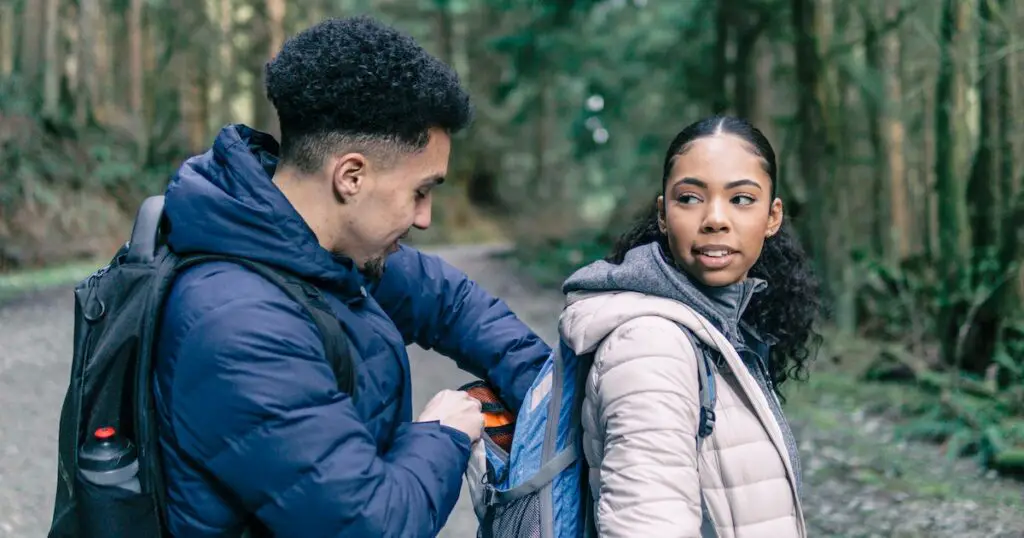
Beginner’s Guide to Choosing an Easy Backpacking Destination
Choosing the right backpacking destination is crucial, especially for beginners. It sets the tone for your entire adventure and can make or break your experience.
So, let’s explore some key factors to consider when selecting an easy backpacking destination.
Importance of Selecting an Easy Destination
For beginners, it’s essential to choose a destination that offers a manageable level of challenge.
Opting for an easy backpacking trail ensures you have an enjoyable experience while building confidence in your abilities.
It allows you to focus on soaking in the beauty of nature without feeling overwhelmed.
Factors to Consider When Choosing a Destination
Several factors come into play when deciding on a suitable backpacking destination:
- Distance: Consider how far you’re willing to travel and the duration of your trip.
- Elevation Gain: Look for trails with moderate elevation gain rather than steep ascents, as they are easier on inexperienced hikers.
- Terrain Difficulty: Choose trails with well-maintained paths and minimal technical obstacles like scrambling or rock climbing.
Highlighting Beginner-Friendly Trails or National Parks
To get started, research beginner-friendly trails or national parks known for their accessibility and scenic beauty. Here are a few options worth considering:
- Yosemite National Park (California): Offers various easy-to-moderate trails amidst breathtaking landscapes.
- Appalachian Trail (Eastern United States): Provides sections suitable for beginners looking for shorter hikes.
- Joshua Tree National Park (California): Features desert hiking with unique rock formations and stunning sunsets.
Tips on Researching Potential Destinations
When researching potential destinations, keep these tips in mind:
- Read guidebooks, online forums, and blogs dedicated to backpacking.
- Check weather conditions during your intended travel dates.
- Look at trail reviews and ratings from fellow hikers.
- Consult experienced backpackers or outdoor enthusiasts who can provide valuable insights.
By considering these factors and doing thorough research, you can find an easy backpacking destination that aligns with your preferences and skill level.
Remember, the key is to start with a manageable challenge that allows you to enjoy the journey while gaining experience.
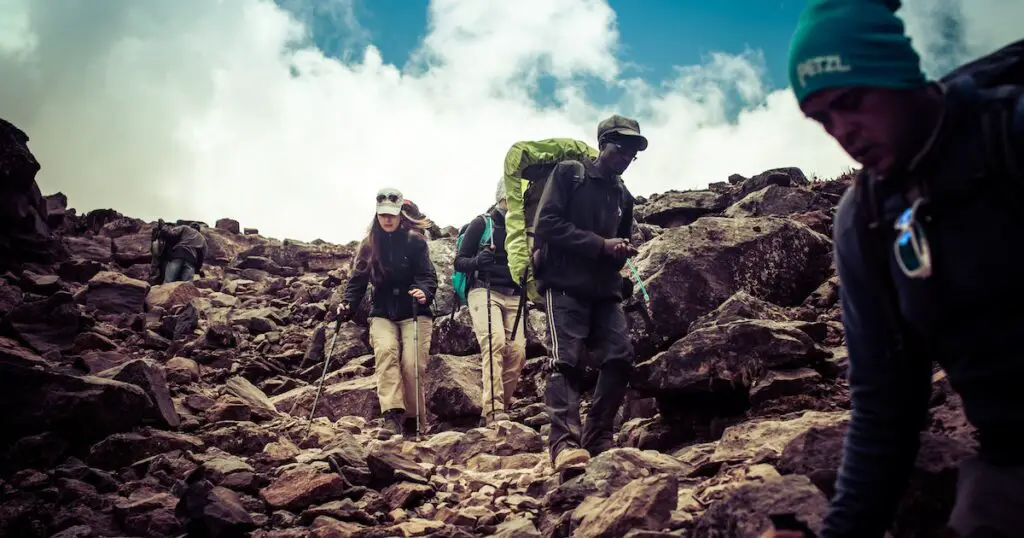
Essential Gear and Clothing for Backpacking Beginners
Necessary Gear for Backpacking
Having the right gear is crucial. Here are some essential items you’ll need:
- A sturdy backpack: It’s important to choose a backpack that fits well and has enough space for your gear.
- A sleeping bag: Look for one that is lightweight, compact, and appropriate for the weather conditions you’ll be encountering.
- A tent: Make sure to select a tent that is durable, easy to set up, and provides adequate protection from the elements.
- Cooking equipment: This includes a stove, cookware, utensils, and food storage containers.
Clothing Essentials for Backpacking
Proper clothing is essential when venturing into the great outdoors. Here are some key items to consider:
- Moisture-wicking layers: Opt for clothing made of materials like polyester or merino wool that will keep you dry and comfortable.
- Proper footwear: Invest in a pair of sturdy hiking boots or trail shoes that provide good traction and ankle support.
- Rain gear: Pack a waterproof jacket and pants to stay dry during unexpected showers.
Additional Gear Considerations
In addition to the basics, there are other important items you should have with you:
- Navigation tools: Carry a map and compass or use GPS devices to help navigate your way on the trails.
- First aid kit: Be prepared for any emergencies by having a well-stocked first aid kit with essentials like bandages, pain relievers, and antiseptic wipes.
- Water filtration systems: Ensure access to clean drinking water by using filters or purifiers.
Finding Affordable Gear Options
Backpacking gear can be expensive, but there are ways to find affordable options without compromising quality:
- Second-hand stores or online marketplaces often have used gear available at lower prices.
- Look out for sales or discounts at outdoor retailers.
- Borrow gear from friends or family members who have experience with backpacking.
Remember, investing in the right gear and clothing will make your backpacking experience safer and more enjoyable.

Building Fitness for Backpacking: Training and Stretching
To handle the demands of carrying a heavy pack while hiking long distances, it’s important to be physically fit.
This section will discuss the significance of physical fitness in backpacking and provide tips on training and stretching to prepare your body for the adventure.
Importance of physical fitness
Carrying a heavy pack while hiking long distances can be challenging. Being physically fit helps you endure the strain and enjoy your backpacking experience.
It allows you to hike longer, climb steep hills, and explore rugged terrains without feeling exhausted.
Suggested training exercises
To build your fitness level for backpacking, focus on cardiovascular endurance and strength-building exercises.
Here are some suggested training exercises:
- Running or brisk walking: These activities improve cardiovascular endurance.
- Squats and lunges: These exercises strengthen your leg muscles for uphill climbs.
- Push-ups and planks: They help develop upper body strength needed for carrying a heavy pack.
Benefits of stretching routines
Stretching before and after hikes is essential to prevent injuries. It improves flexibility, increases blood flow to your muscles, and reduces muscle soreness.
Make sure to include these stretches in your routine:
- Calf stretches
- Quad stretches
- Hamstring stretches
- Shoulder rolls
- Neck stretches
Gradually increasing intensity
When starting a training program, it’s important to gradually increase the intensity and duration of your workouts.
Pushing yourself too hard too soon can lead to injuries or burnout.
Start with shorter hikes or lighter packs, then gradually increase weight, distance, and elevation gain as you build strength.
Remember that building fitness takes time; there are no shortcuts. Stay consistent with your training regimen and listen to your body’s limits.
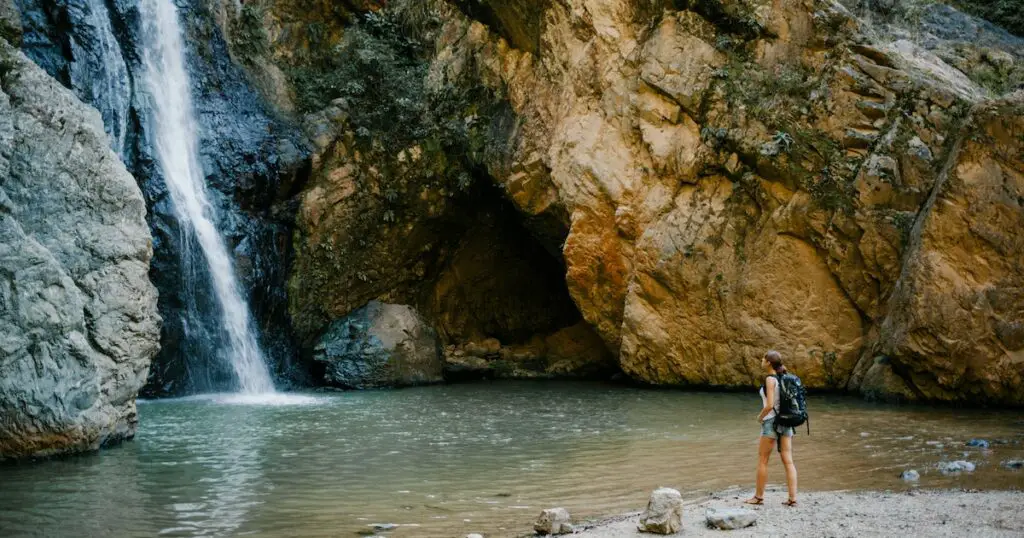
Planning Your Backpacking Trip: Trail Selection and Mileage Considerations
When it’s time to plan your backpacking trip, one of the first things you’ll need to do is select a trail.
There are several factors to consider when choosing a trail that suits your preferences and abilities.
Trail Selection Factors
To start, think about the difficulty level of the trail. Some trails are more challenging than others, with steep inclines or rugged terrain.
Consider your fitness level and experience when deciding on a trail difficulty.
Elevation gain is another important factor. If you’re not used to hiking in mountainous areas, it might be best to choose a trail with less elevation gain.
This will make your journey more enjoyable and manageable. Take into account the weather conditions in the area where you plan to hike.
Certain trails may be more suitable during specific seasons or times of the year. Research weather patterns and choose accordingly.
Planning Daily Mileage
Once you’ve selected a trail, it’s crucial to plan your daily mileage realistically.
Consider both your personal fitness level and the difficulty of the terrain. Pushing yourself too hard can lead to exhaustion or injuries.
Research online resources for information on popular trails, including reviews and trail maps.
These resources can give you insights into what other hikers have experienced on specific routes.
Create a detailed itinerary for your backpacking trip, taking into account distances between campsites or landmarks along the way.
This will help ensure that you have enough time to complete each day’s planned mileage comfortably.
Remember that meal planning is an essential part of any backpacking trip.
Calculate how many miles you expect to cover each day so that you can pack enough food accordingly. By carefully considering these factors and doing thorough research.
You’ll be able to select an appropriate trail for your backpacking adventure while also planning realistic daily mileage.
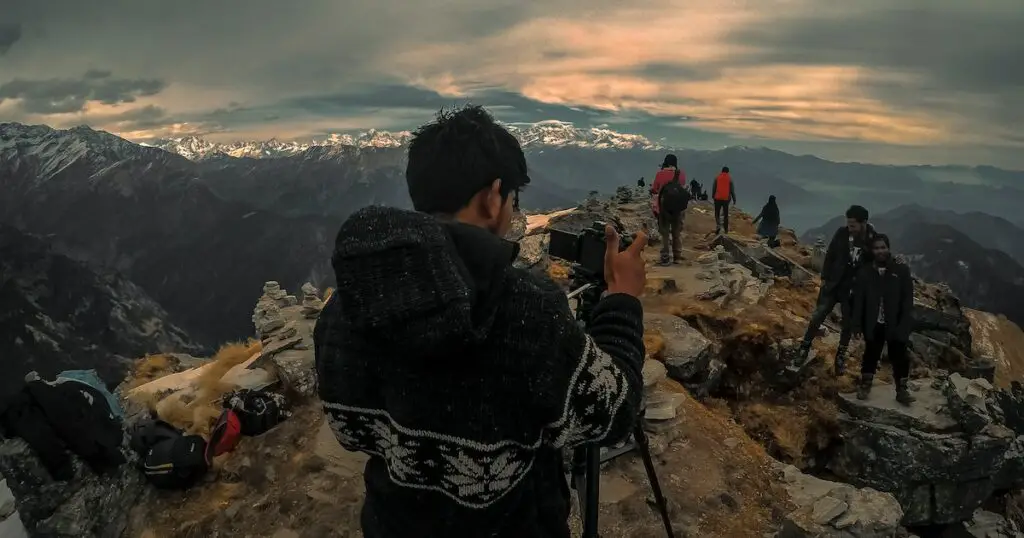
Leave No Trace Principles: Campsite Etiquette and Environmental Responsibility
To ensure minimal impact on the environment while backpacking, it is essential to follow the Leave No Trace principles.
These guidelines help us protect our natural surroundings and keep them pristine for future generations.
Let’s take a look at some important aspects of campsite etiquette and environmental responsibility.
Explanation of Leave No Trace Principles
The Leave No Trace principles are a set of guidelines that aim to minimize our impact on the environment while enjoying the great outdoors.
By following these principles, we can ensure that our presence does not harm wildlife habitats or disrupt the delicate balance of nature.
Proper Campsite Selection and Waste Disposal
When choosing a campsite, it’s important to select an area that has already been impacted by human activity.
Look for established campsites rather than creating new ones. This helps prevent further damage to sensitive ecosystems.
Be mindful of waste disposal by packing out all trash and leaving no trace behind.
Respecting Wildlife Habitats
While exploring national parks or other wilderness areas, it’s crucial to respect wildlife habitats.
Avoid approaching or feeding animals, as this can disrupt their natural behaviors and lead to harmful consequences for both humans and wildlife.
Educating Yourself about Local Regulations
Before embarking on your backpacking adventure, take the time to educate yourself about local regulations regarding fires, camping restrictions, permits required, etc.
Understanding these rules ensures that you are in compliance with park regulations and helps maintain the integrity of these natural spaces.
By adhering to these principles and practicing responsible camping habits, we can enjoy backpacking while minimizing our impact on the environment.
Remember, leave only footprints and take only memories!
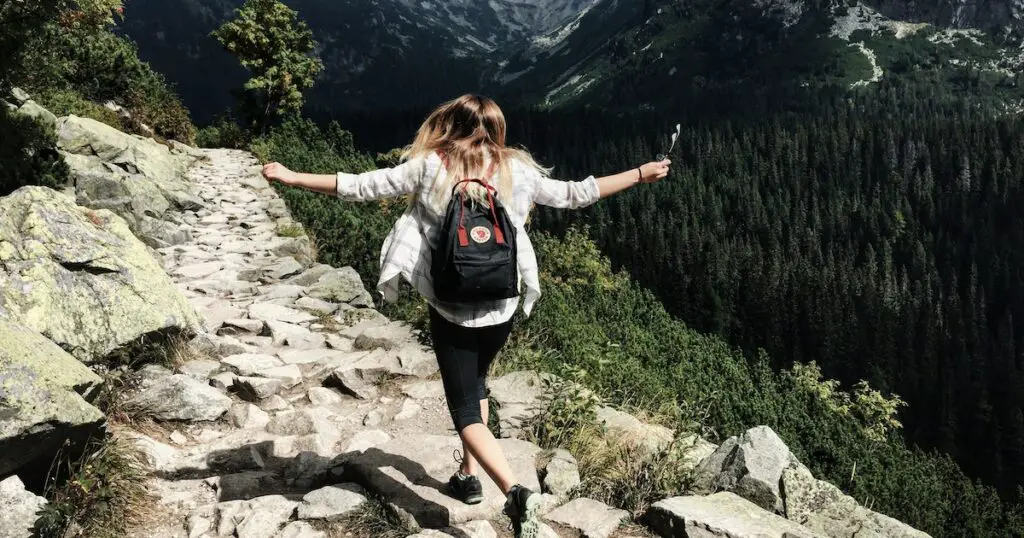
Final Thoughts on Getting Started Backpacking
In conclusion, getting started backpacking requires careful planning and preparation.
This blog post has covered the essential aspects of backpacking for beginners, including choosing a suitable destination.
Acquiring the necessary gear and clothing, building fitness levels, planning the trip, and practicing responsible camping etiquette.
By following these guidelines, novice backpackers can embark on their first adventure with confidence and enjoyment.
To ensure a successful backpacking experience, it is crucial to continue learning and seeking advice from experienced hikers.
Join online forums or local hiking clubs to connect with like-minded individuals who can offer valuable insights and tips.
Remember to always prioritize safety by researching trail conditions, checking weather forecasts, and informing someone about your itinerary before heading out.
With proper preparation and a sense of adventure, anyone can embrace the wonders of backpacking.
FAQs
1. What are some essential items to pack for a backpacking trip?
When packing for a backpacking trip, it’s important to prioritize lightweight and functional gear. Some essential items include a tent, sleeping bag, cooking stove, water filter or purification tablets, headlamp or flashlight with extra batteries, map and compass (or GPS).
2. How do I choose an appropriate backpack size?
Choosing the right backpack size depends on the duration of your trip and how much gear you need to carry. Generally speaking:
Daypacks (up to 30 liters) are suitable for day hikes.
Weekend packs (30-50 liters) work well for overnight trips.
Multi-day packs (50-70 liters) are ideal for trips lasting several days. Make sure the pack fits comfortably on your shoulders and hips while distributing weight evenly.
3. How can I prevent blisters while backpacking?
To prevent blisters, it’s important to wear well-fitting and broken-in hiking boots or shoes. Consider the following tips:
Wear moisture-wicking socks to keep your feet dry.
Apply a lubricant such as petroleum jelly or specialized blister prevention products on areas prone to friction.
Take regular breaks to air out your feet and change socks if necessary.
Keep your feet clean and dry during breaks and at night. If you feel a hot spot forming, address it immediately by applying moleskin or a blister bandage.
4. How do I choose a suitable backpacking trail for beginners?
When choosing a trail, consider factors such as distance, elevation gain, terrain difficulty, weather conditions, and available amenities (such as water sources and campsites). Start with shorter trails that match your fitness level and gradually increase the difficulty as you gain experience.
5. What should I do if I encounter wildlife while backpacking?
If you encounter wildlife while backpacking, remember to respect their space and observe from a safe distance. Avoid approaching or feeding animals, as this can disrupt their natural behavior and potentially be dangerous. Make noise to alert animals of your presence and give them the opportunity to move away.

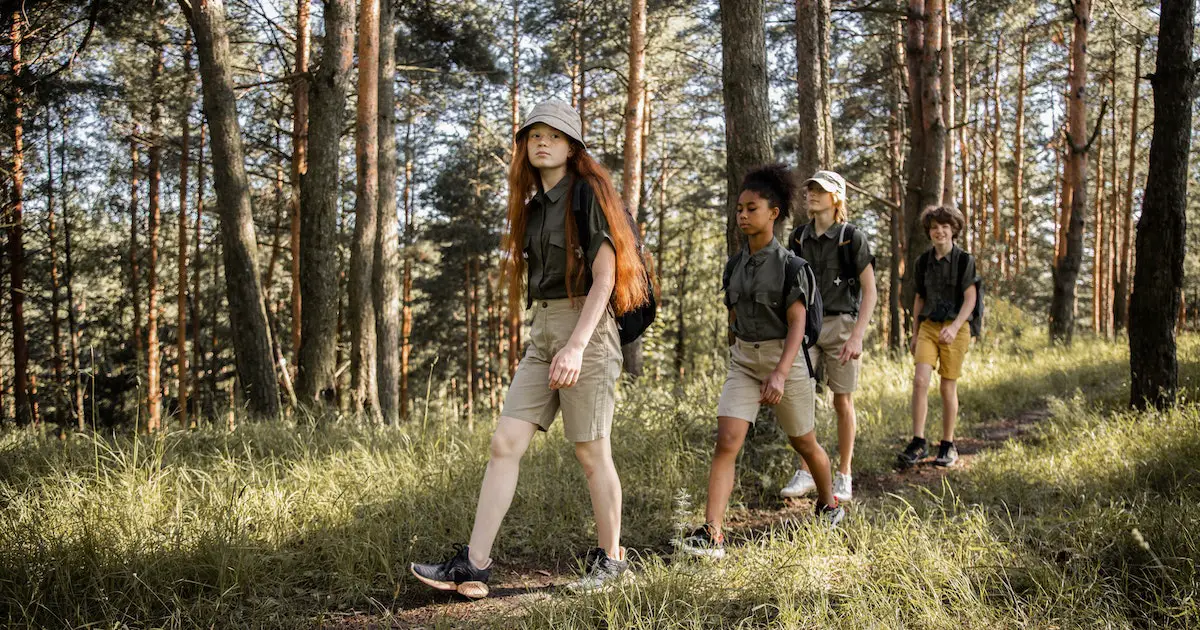

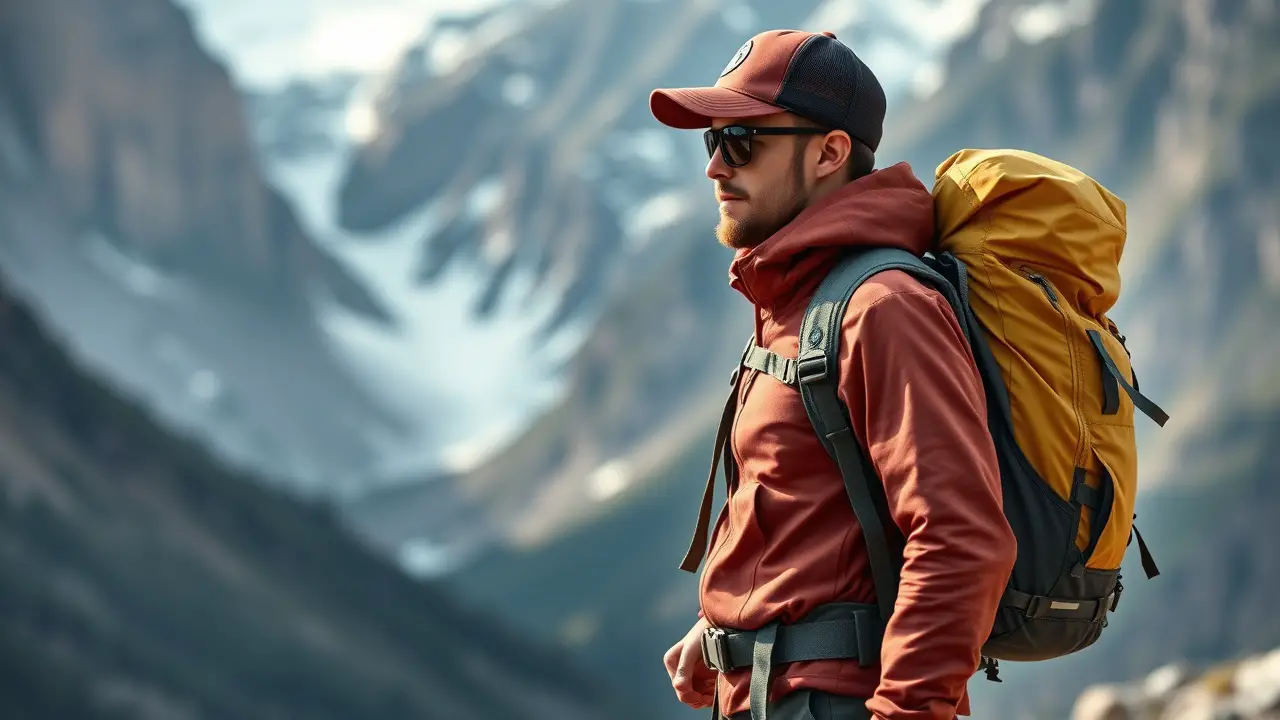
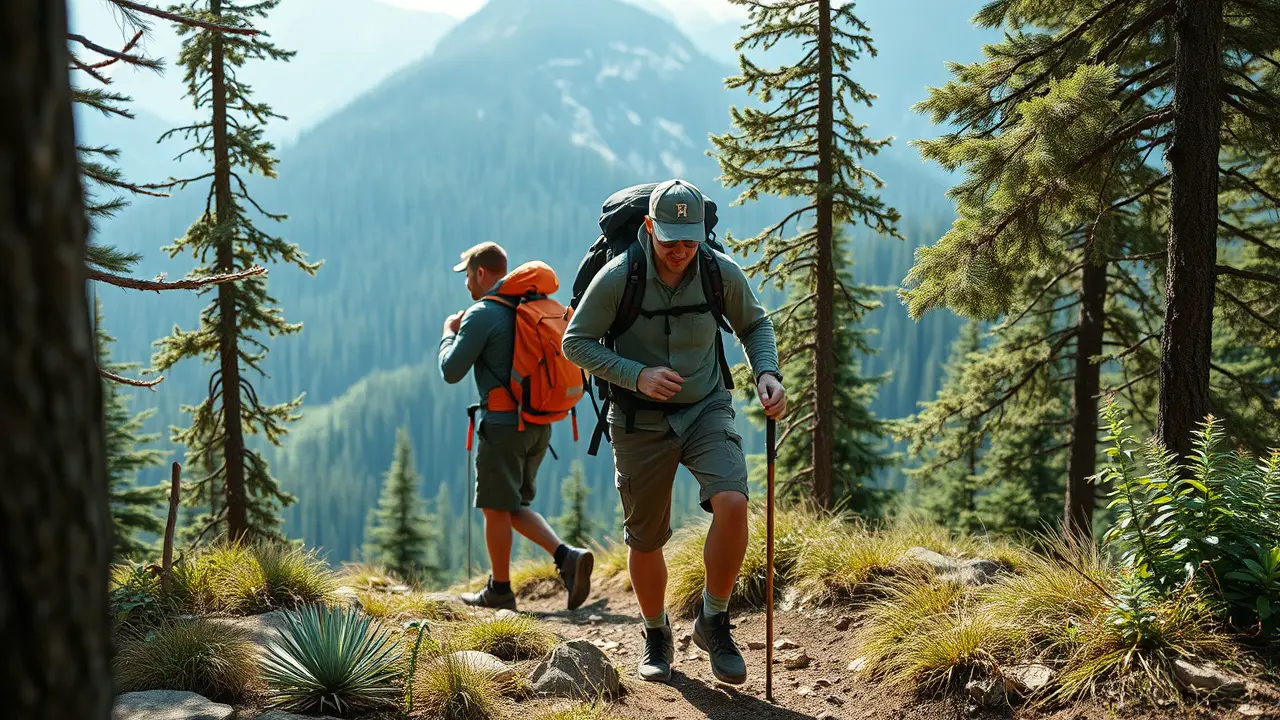
Leave a Reply